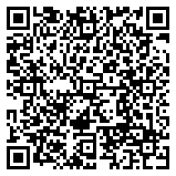Reading, interpretation and use of nutritional labeling in adults in a neighborhood of Asunción
DOI:
https://doi.org/10.53732/rccsalud/2023.e5106Keywords:
non-communicable diseases, food, industrialized food, nutritional labelingAbstract
Introduction. Nutritional labeling informs the consumer about the type and content of nutrients, favoring the appropriate selection according to their needs or health conditions. Objective. Evaluate the reading, interpretation and use of nutritional food labeling in the purchase decision of adults from the Villa Morra neighborhood of Asunción consulted in June 2018. Materials and methods. Cross-sectional descriptive study, with the application of a structured questionnaire through an interview, with questions about sociodemographic data, reading frequency, reasons for reading or not, use of nutritional labeling, content reviewed by the consumer, interpretation of the terms contribution and Percentage of Daily Value (%DV) and agreement with the implementation of front labeling. Results. Of 100 interviewees, 73% reported reading (always and sometimes) the nutritional labeling, 48% of these use it for the selection and purchase of food and 75% of the general population you do not know or do not interpret the terms of portion and %DV. The reasons associated with reading were "concern about the health of their family" (36%), "being on a diet" (33%), and "curiosity" (23%); not reading was referred to for reasons such as "due to lack of time" (61.7%) and "because it is not well visible, it is very small" (28%); 91% think implementation of the front labeling of food as an alert method is necessary. Conclusion. The reading of nutritional labeling is frequent, but its correct interpretation and use is not, which is why it is urgent to establish educational campaigns aimed at the population and implement front labeling to facilitate and speed up reading and interpretation.
References
Ministerio de Salud Pública y Bienestar Social (MSPyBS). Encuesta Nacional de Enfermedades Crónicas No Transmisibles 2011 (ENECNT). Dirección General de Vigilancia Sanitaria. Asunción: Paraguay. 2011. https://dvent.mspbs.gov.py/encuesta-nacional-factores-de-riesgo-2011/
Lindemann I, Teixeira da Silva M, Guimarães J, Mendoza-Sassi R. Leitura de rótulos alimentares entre usuários da atenção básica e fatores asociados. Cad. Saúde Colet. 2016;24(4):478-86. 10.1590/1414-462X201600040234
López-Cano LA, Restrepo-Mesa S. Etiquetado nutricional, una mirada desde los consumidores de alimentos. Perspectivas En Nutrición Humana. 2014;16(2):146-58. 10.17533/udea.penh.v16n2a03
Tolentino-Mayo L, Rincón-Gallardo Patiño S, Bahena-Espina L, Ríos V, Barquera S. Conocimiento y uso del etiquetado nutrimental de alimentos y bebidas industrializados en México. Salud pública Méx. 2018;60(3):328- 37. https://www.scielosp.org/article/spm/2018.v60n3/328-337/
Freire WB, Waters WF, Rivas-Mariño G. Semáforo nutricional de alimentos procesados: estudio cualitativo sobre conocimientos, comprensión, actitudes y prácticas en el Ecuador. Rev Peru Med Exp Salud Pública. 2017;34(1):11-8. 10.17843/rpmesp.2017.341.2762
Wills JM, Schmidt DB, Pillo-Blocka F, Cairns G. Exploring global consumer attitudes toward nutrition information on food labels. Nutr Rev 2009;67(1):102-106. 10.1111/j.1753-4887.2009.00170.x
De la Cruz-Góngora V, Villalpando S, Rodríguez-Oliveros G, Castillo-García M, Mundo-Rosas V, Meneses-Navarro S. Uso y comprensión del etiquetado nutrimental posterior de los alimentos pre-empaquetados en una muestra de consumidores mexicanos. Salud Publica Mex. 2012;54(2):158-166. https://www.scielo.org.mx/scielo.php?script=sci_abstract&pid=S0036-36342012000200012&lng=es
Gritz E. Evaluación del grado de lectura e interpretación del rotulado nutricional de los alimentos envasados por parte del profesional de la salud [Tesis de grado]. Pontificia Universidad Javeriana: Facultad de Ciencias Carrera de Nutrición. Bogotá, 2012. https://repository.javeriana.edu.co/bitstream/handle/10554/8906/tesis840.pdf?sequence=1
Damián-Bastidas N, Chala-Florencio R, Chávez-Blanco R, Mayta-Tristán P. Lectura, uso e interpretación de etiquetas nutricionales en usuarios de gimnasios de Huancayo, Perú 2015. Nutr. Hosp. 2016;33(6):1410-17. https://scielo.isciii.es/scielo.php?script=sci_arttext&pid=S0212-16112016000600025
Loria V, Pérez A, Fernández C, Villarino M, Rodríguez D, Zurita L, et al L. Análisis de las encuestas sobre etiquetado nutricional realizadas en el Hospital La Paz de Madrid durante la 9ª edición del “Día Nacional de la Nutrición (DNN) 2010”. Nutr Hosp. 2011;26(1):97-106. https://scielo.isciii.es/scielo.php?script=sci_arttext&pid=S0212-16112011000100011
Prieto-Castillo M.A, Royo-Bordonada A, Moya-Geromini L. Information search behaviour, understanding and use of nutrition labeling by
residents of Madrid, Spain. Public Health. 2015;129(3):226-236. 10.1016/j.puhe.2014.12.003
Codex Alimentarius. Directrices sobre etiquetado nutricional (CAC/GL 2-1985). Comisión conjunta FAO/OMS del Codex Alimentarius: Roma, Italia. 1985. https://www.fao.org/3/a1390s/a1390s.pdf
Malloy-Weir L, Cooper M. Health literacy, literacy, numeracy and nutrition label understanding and use: a scoping review of the literature Public Health Nutrition. 2017;30(3):309-325. 10.1111/jhn.12428
Persoskie A, Hennessy E, Nelson WL. US Consumers' Understanding of Nutrition Labels in 2013: The Importance of Health Literacy. Prev Chronic Dis. 2017;14:E86. 10.5888/pcd14.170066
Soederberg LM, Cassady DL. The effects of nutrition knowledge on food label use. A review of the literatura. Appetite. 2015; 90(1):207-216. 10.1016/j.appet.2015.05.029
Babio N, López L, Salas-Salvado J. Análisis de la capacidad de elección de alimentos saludables por parte de los consumidores en referencia a dos modelos de etiquetado nutricional: estudio cruzado. Nutr. Hosp. 2013; 28(1):173-181. 10.3305/nh.2013.28.1.6254
Julia C, Blanchet O, Méjean C, Péneau S, Ducrot P, Allès B et al. Impact of the front-of-pack 5-colour nutrition label (5-CNL) On the nutritional quality of purchases: an experimental study. Int J Behav Nutr Phys Act. 2016;13(101):1-9. 10.1186/s12966-016-0416-4
Crosetto P, Muller L, Ruffieux B. Réponse des consommateurs à trois systèmes d'étiquetage nutritionnel face avant. Cahiers de Nutrition et de Diététique. 2016;51(3):124-31. 10.1016/j.cnd.2016.04.002
Mejia C, Aguilar-Pantaleón, Carlos, Alfaro S, Carranza B, Eulogio P, Gálvez A et al. Factores que influyen en el uso del octógono como marcador de información nutricional en los consumidores en la población de Lima-Perú. Nutr. clín. diet. hosp. 2019;39(4):65-71. 10.12873/3943mejia
Franco Arellano B, Vanderlee L, Ahmed M, Oh A, L'Abbé M. Corrigendum to “Influence of front-of-pack labelling and regulated nutrition claims on consumers' perceptions of product healthfulness and purchase intentions: A randomized controlled trial”. Appetite. 2020; 149(1):104629. 10.1016/j.appet.2020.104629


.png)














 All the contents of this journal are licensed under a
All the contents of this journal are licensed under a 